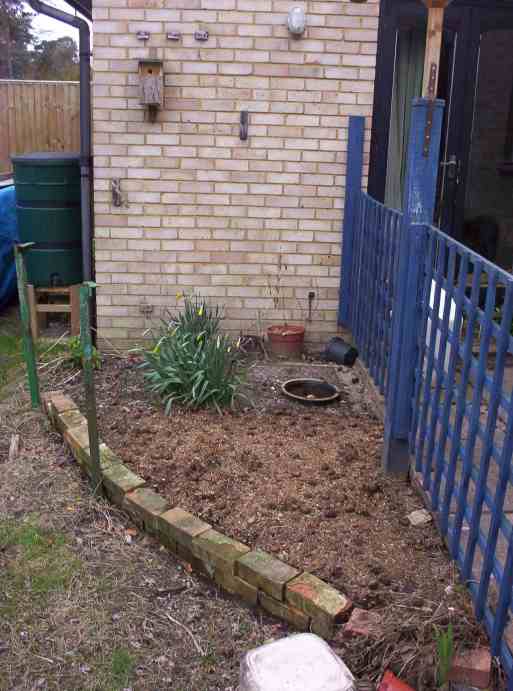Eventually it will have
fruit trees along the fence, but this year we're going to try
strawberries.
These
should complement the raspberries nicely. Last year we had about 20lbs
out of this small bed and were picking from early September into early
November.
We grow the late raspberries as they're, supposedly,
self supporting.
With
the weight of fruit however we have to provide a little support, hence
the fence stakes, to keep them off the ground and away from the slugs,
snails, and mice.
If the daffodils intrigue you, then they're
about
two weeks ahead of everywhere else locally due to the sheltered nature
of this bed.
We may also get Blue Tits nesting in the box
this
year. It didn't go up until May last year so missed the early season,
but they're showing an interest already so maybe we'll be lucky this
year.
If you look carefully in the first picture you'll also
see
I've got a robin box up - so far ignored by the robin's. I've also been
cultivating a young blackbird by feeding him chaffer grubs, beetle
larvae, cut worms, etc. The trouble is he's got sufficiently tame to
steal worms whilst I'm digging. |  |